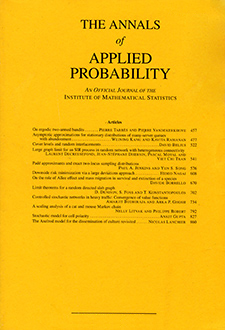Abstract
The Axelrod model is a spatial stochastic model for the dynamics of cultures which includes two important social factors: social influence, the tendency of individuals to become more similar when they interact, and homophily, the tendency of individuals to interact more frequently with individuals who are more similar. Each vertex of the interaction network is characterized by its culture, a vector of $F$ cultural features that can each assumes $q$ different states. Pairs of neighbors interact at a rate proportional to the number of cultural features they have in common, which results in the interacting pair having one more cultural feature in common. In this article, we continue the analysis of the Axelrod model initiated by the first author by proving that the one-dimensional system fixates when $F\leq cq$ where the slope satisfies the equation $e^{-c}=c$. In addition, we show that the two-feature model with at least three states fixates. This last result is sharp since it is known from previous works that the one-dimensional two-feature two-state Axelrod model clusters.
Citation
Nicolas Lanchier. Stylianos Scarlatos. "Fixation in the one-dimensional Axelrod model." Ann. Appl. Probab. 23 (6) 2538 - 2559, December 2013. https://doi.org/10.1214/12-AAP910
Information





